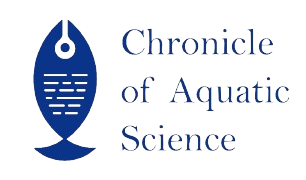| File | Action |
|---|---|
| CoAS_V1IS9_05 | Download |
- 919088951040 call us
- chronicleofaquaticscience@gmail.com Mail us
CoAS_V1IS9_05
Popular Article
Nurturing Natures Harvest: Biofortifying Seaweed for Health and Nutrition
Jeevitha, J.*1, Shweta Biswas2 and Aruna, S.1
Abstract
The global population is projected to reach 10 billion by 2050, necessitating sustainable food sources to combat malnutrition. Seaweed, with its rich nutritional content and rapid growth, has emerged as a promising biofortification option. This paper examines the current status of seaweed resources, nutritional composition, and strategies for biofortification, focusing on India's coastal waters. Seaweed biofortification offers a viable solution to global food security challenges by providing essential nutrients and bioactive compounds. However, challenges such as nutrient variability, environmental risks, regulatory concerns, and consumer acceptance must be addressed for successful implementation. Collaborative efforts among scientists, policymakers, and the food industry are essential for the widespread adoption of biofortified seaweed, aligning with Sustainable Development Goals (SDGs) related to hunger eradication, sustainable aquaculture, climate action, and marine ecosystem preservation. Integration of biofortified seaweed into national fisheries programs, such as India's Pradhan Mantri Matsya Sampada Yojana (PMMSY), further strengthens sustainable development objectives. Continued investment, innovation, and inclusive governance frameworks are essential for realizing the transformative potential of biofortified seaweed in advancing nutrition security and fostering resilient food systems on a global scale.
Keywords
Seaweed, Biofortification, Sustainable Development Goals (SDG), Nutrition
References
Bouis, H., & Saltzman, A. (2017). Improving nutrition through biofortification: A review of evidence from HarvestPlus, 2003 through 2016. Global Food Security, 12, 49 - 58. https://doi.org/10.1016/j.gfs.2017.01.009.
Charrier, B., Rolland, É., Gupta, V., & Reddy, C. (2015). Production of genetically and developmentally modified seaweeds: exploiting the potential of artificial selection techniques. Frontiers in Plant Science, 6. https://doi.org/10.3389/fpls.2015.00127.
FAO. (2018). The State of World Fisheries and Aquaculture 2018 – Meeting the sustainable development goals. Rome.
Ganesan, M., Trivedi, N., Gupta, V., Madhav, S. V., Radhakrishna Reddy, C., & Levine, I. A. (2019). Seaweed resources in India–current status of diversity and cultivation: prospects and challenges. Botanica Marina, 62(5), 463-482.
Garg, M., Sharma, N., Sharma, S., Kapoor, P., Kumar, A., Chunduri, V., & Arora, P. (2018). Biofortified Crops Generated by Breeding, Agronomy, and Transgenic Approaches Are Improving Lives of Millions of People around the World. Frontiers in Nutrition, 5. https://doi.org/10.3389/fnut.2018.00012.
Guinea, P. N., Fund, G. C., & Advisors, P. C. (2020). 2022 United Nations Ocean Conference Side Event. Policy, 112. Islam, M. T. (2023). Determination of Nutritional Composition of Potential Red Seaweed (Porphyra umbilicalis) (Doctoral dissertation, Chattogram Veterinary & Animal Sciences University, Khulshi, Chattogram).
Johns, T., & Eyzaguirre, P. (2007). Biofortification, biodiversity and diet: A search for complementary applications against poverty and malnutrition. Food Policy, 32, 1-24. https://doi.org/10.1016/J.FOODPOL.2006.03.014.
Meenakshi, J., Johnson, N., Manyong, V., DeGroote, H., Javelosa, J., Yanggen, D., Naher, F., Gonzalez, C., García, J., & Meng, E. (2010). How cost-effective is biofortification in combating micronutrient malnutrition? an Ex-ante assessment. World Development, 38, 64-75. https://doi.org/10.1016/J.WORLDDEV.2009.03.014.
Nestel, P., Bouis, H., Meenakshi, J., & Pfeiffer, W. (2006). Biofortification of staple food crops.. The Journal of nutrition, 136 4, 1064-7 . https://doi.org/10.1093/JN/136.4.1064.
PMMSY- https://pmmsy.dof.gov.in/
Saltzman, A., Birol, E., Bouis, H., Boy, E., Moura, F., Islam, Y., & Pfeiffer, W. (2013). Biofortification: Progress toward a more nourishing future. Global Food Security, 2, 9-17.
Charrier, B., Rolland, É., Gupta, V., & Reddy, C. (2015). Production of genetically and developmentally modified seaweeds: exploiting the potential of artificial selection techniques. Frontiers in Plant Science, 6. https://doi.org/10.3389/fpls.2015.00127.
FAO. (2018). The State of World Fisheries and Aquaculture 2018 – Meeting the sustainable development goals. Rome.
Ganesan, M., Trivedi, N., Gupta, V., Madhav, S. V., Radhakrishna Reddy, C., & Levine, I. A. (2019). Seaweed resources in India–current status of diversity and cultivation: prospects and challenges. Botanica Marina, 62(5), 463-482.
Garg, M., Sharma, N., Sharma, S., Kapoor, P., Kumar, A., Chunduri, V., & Arora, P. (2018). Biofortified Crops Generated by Breeding, Agronomy, and Transgenic Approaches Are Improving Lives of Millions of People around the World. Frontiers in Nutrition, 5. https://doi.org/10.3389/fnut.2018.00012.
Guinea, P. N., Fund, G. C., & Advisors, P. C. (2020). 2022 United Nations Ocean Conference Side Event. Policy, 112. Islam, M. T. (2023). Determination of Nutritional Composition of Potential Red Seaweed (Porphyra umbilicalis) (Doctoral dissertation, Chattogram Veterinary & Animal Sciences University, Khulshi, Chattogram).
Johns, T., & Eyzaguirre, P. (2007). Biofortification, biodiversity and diet: A search for complementary applications against poverty and malnutrition. Food Policy, 32, 1-24. https://doi.org/10.1016/J.FOODPOL.2006.03.014.
Meenakshi, J., Johnson, N., Manyong, V., DeGroote, H., Javelosa, J., Yanggen, D., Naher, F., Gonzalez, C., García, J., & Meng, E. (2010). How cost-effective is biofortification in combating micronutrient malnutrition? an Ex-ante assessment. World Development, 38, 64-75. https://doi.org/10.1016/J.WORLDDEV.2009.03.014.
Nestel, P., Bouis, H., Meenakshi, J., & Pfeiffer, W. (2006). Biofortification of staple food crops.. The Journal of nutrition, 136 4, 1064-7 . https://doi.org/10.1093/JN/136.4.1064.
PMMSY- https://pmmsy.dof.gov.in/
Saltzman, A., Birol, E., Bouis, H., Boy, E., Moura, F., Islam, Y., & Pfeiffer, W. (2013). Biofortification: Progress toward a more nourishing future. Global Food Security, 2, 9-17.
- Published online
- 29th February, 2024
How to Cite the Article
Jeevitha, J., Biswas, S. and Aruna, S. 2024. Nurturing Natures Harvest: Biofortifying Seaweed for Health and Nutrition. Chronicle of Aquatic Science 1(9): 32-37.
Copyright
This is an open-access article distributed under the terms of the Creative Commons Attribution License (CC BY). The use, distribution or reproduction in other forums is permitted, provided the original author(s) and the copyright owner(s) are credited and that the original publication in this journal is cited, in accordance with accepted academic practice. No use, distribution or reproduction is permitted which does not comply with these terms.

CoAS_V1IS9_05


